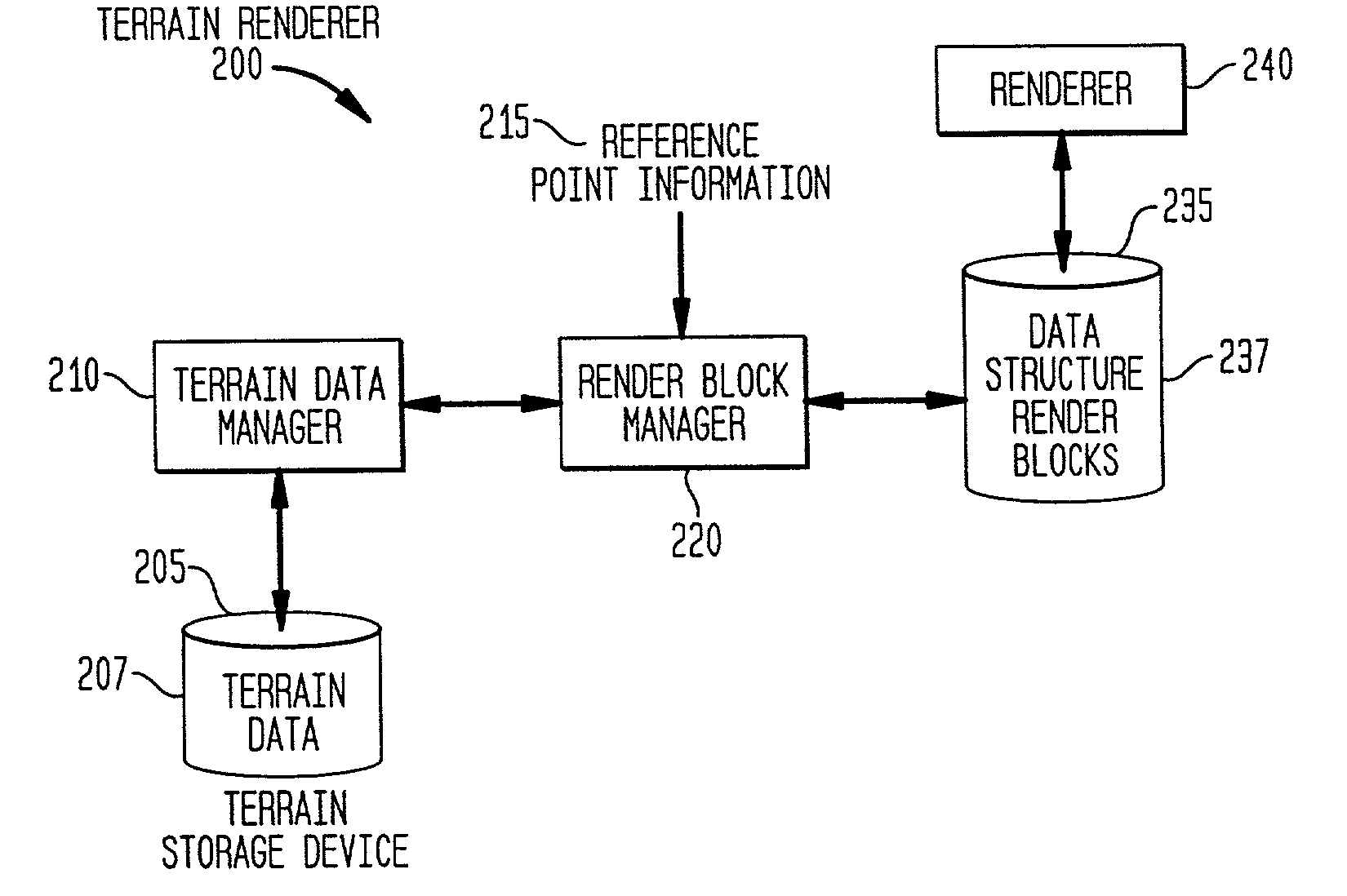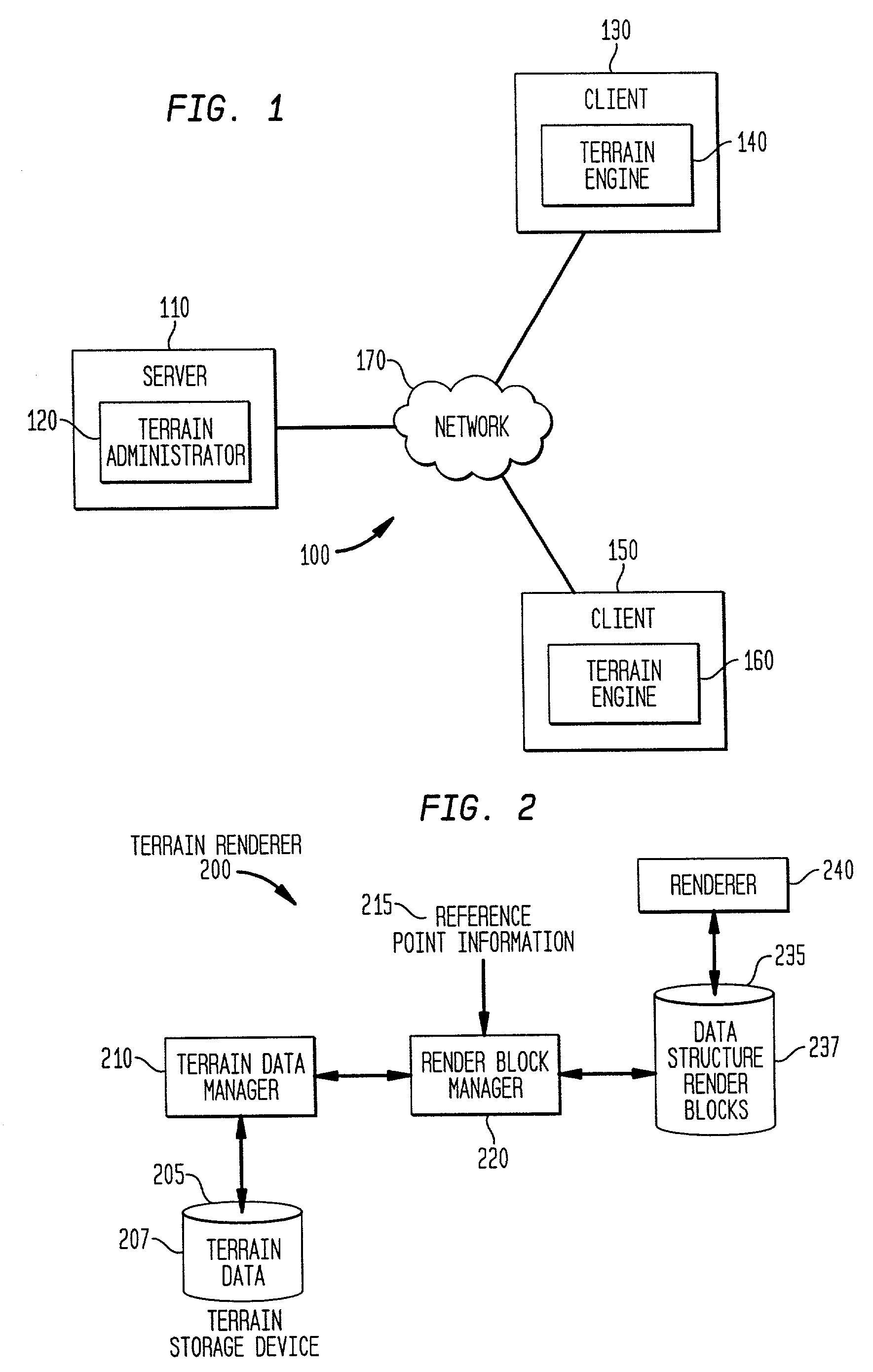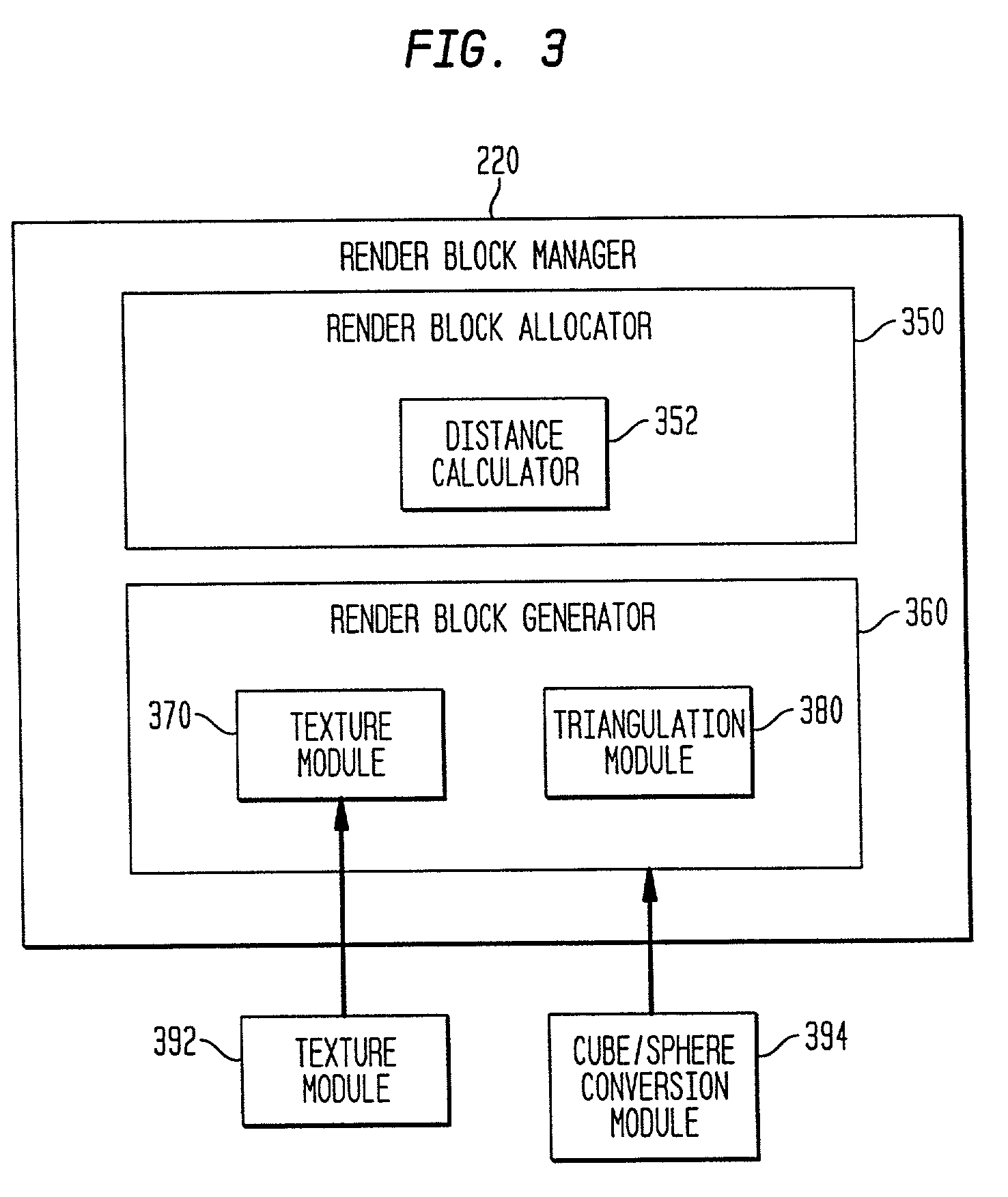Method, system, and computer program product for managing terrain rendering information
a technology of terrain and information management, applied in the field of computer generated terrain, can solve the problems of increasing complexity and size of terrain data, difficult terrain, and algorithms that have not been extended to large terrain areas with complex shapes, such as the earth's surface,
- Summary
- Abstract
- Description
- Claims
- Application Information
AI Technical Summary
Benefits of technology
Problems solved by technology
Method used
Image
Examples
example render
[0082] Example Render Blocks
[0083] Render Block Allocation Algorithm
[0084] Allocation Criteria
[0085] Routine for Finding a Distance Between Points on Different Cube Faces
[0086] Filling allocated Render Blocks
[0087] Texture Creation
[0088] Change of Reference Point Information
[0089] Example Render Block Allocation Algorithm Based on Block Budgets Assigned Per Level
[0090] Position Conversion
[0091] Converting a Position from 3-D to 2-D
[0092] Converting a Position from 2D to 3D
[0093] Converting a Position in 3D to 2D
[0094] Converting a Position from 2D to 3D
[0095] Example Graphics Implementations
[0096] Example Architecture
[0097] Host and Graphics Subsystem
[0098] Example Computer System
[0099] Conclusion
[0100] Overview
[0101] The present invention relates to the management of terrain rendering information. A method, system, computer program product, and computer data signal are provided for managing terrain rendering information. A method, system, computer program product, and computer data...
example environment
[0109] Example Environment
[0110] Embodiments of the present invention are described below with respect to example distributed terrain management and computer graphics environments.
[0111] These example environments, however, are illustrative and not necessarily intended to limit embodiments of the present invention. For example, the present invention can be used with any terrain data source on a stand-alone computer or a networked computer including, but not limited to, a terrain engine that allows terrain data covering the Earth's surface to be rendered, managed, updated, and / or administered at real-time interactive frame rates by consumer-level graphics hardware as described with respect to FIG. 1. In other embodiments, terrain data is simply obtained from user input, memory, a file or any other type of terrain data source.
[0112] Distributed Terrain Management System
[0113] FIG. 1 is a block diagram of a distributed terrain management system 100.
[0114] Distributed terrain management...
example cube
[0155] Example Cube / Sphere Environment
[0156] In one embodiment of the present invention, a three-dimensional terrain topology of a virtual world is represented by a set of two-dimensional topologies. In general, general terrain calculations can be performed more simply and faster on a two-dimensional topology than a three-dimensional topology. FIG. 5 is a diagram that illustrates an example three-dimensional topology of a virtual world defined with respect to a sphere 510. A set of two-dimensional topologies defines cube faces of cube 520. Terrain defined in a coordinate space of the cube faces of cube 520 then approximates terrain defined in a coordinate space of sphere 510.
[0157] Cube 520 has six faces which can be arranged in any number of layouts. FIG. 6 shows one example layout 615. In layout 615, cube faces 0-5 are arranged such that cube faces 0, 2, 1, 3 are arranged in a row side-by-side with cube face 4 adjoining cube face 2, and cube face 5 adjoining cube face 1. Cube face...
PUM
 Login to View More
Login to View More Abstract
Description
Claims
Application Information
 Login to View More
Login to View More - R&D
- Intellectual Property
- Life Sciences
- Materials
- Tech Scout
- Unparalleled Data Quality
- Higher Quality Content
- 60% Fewer Hallucinations
Browse by: Latest US Patents, China's latest patents, Technical Efficacy Thesaurus, Application Domain, Technology Topic, Popular Technical Reports.
© 2025 PatSnap. All rights reserved.Legal|Privacy policy|Modern Slavery Act Transparency Statement|Sitemap|About US| Contact US: help@patsnap.com



